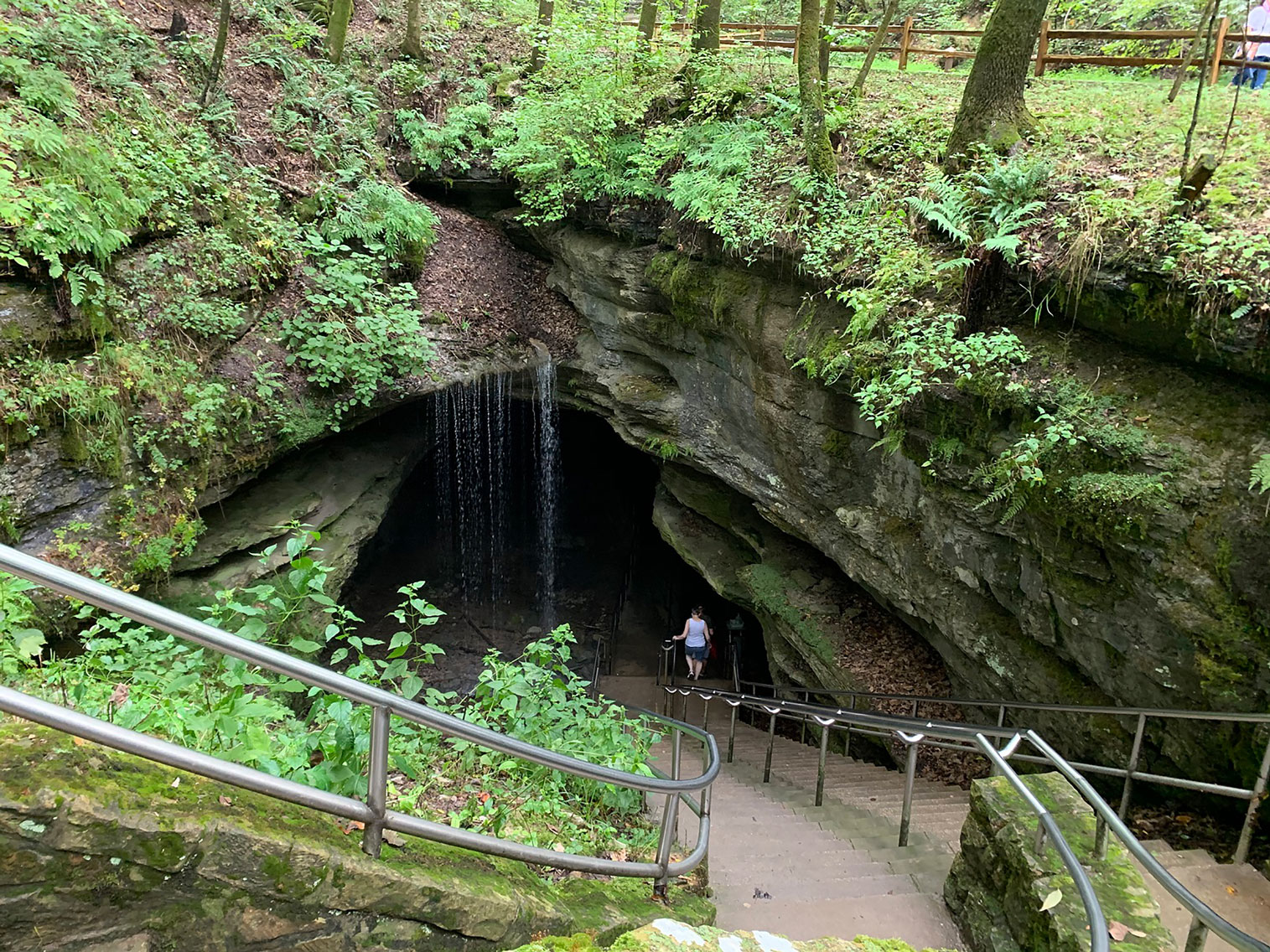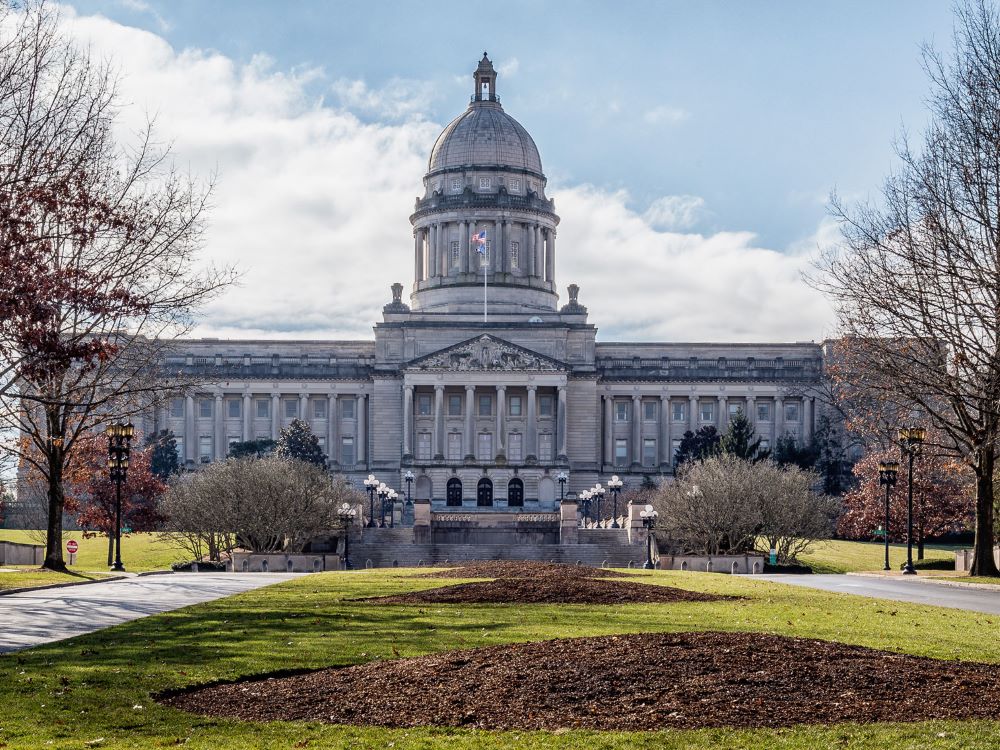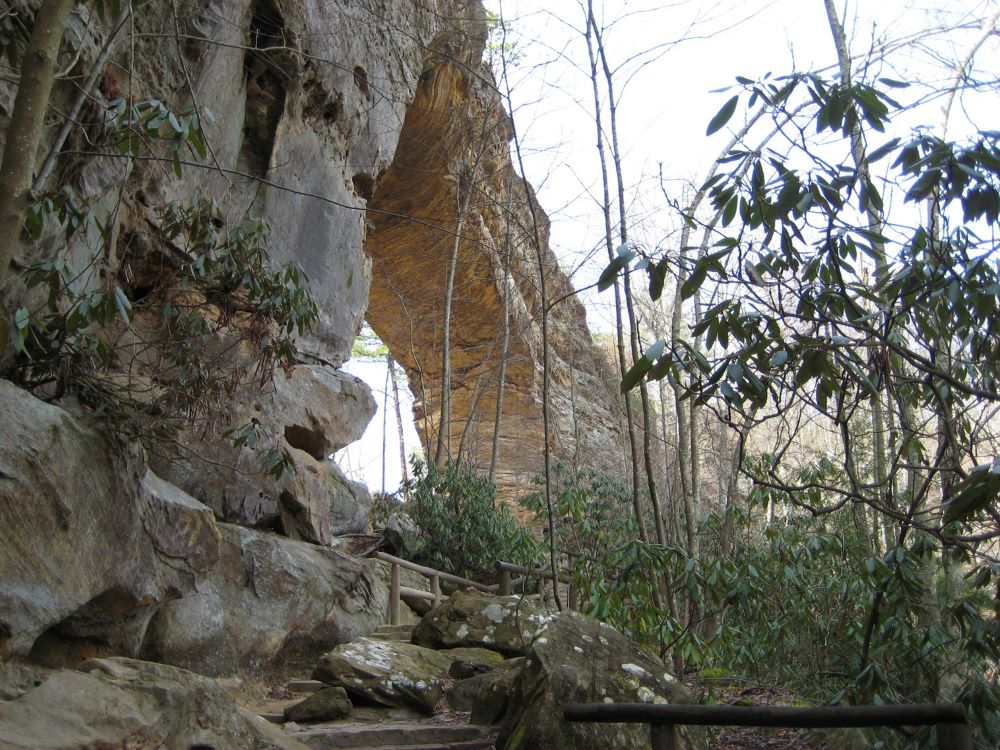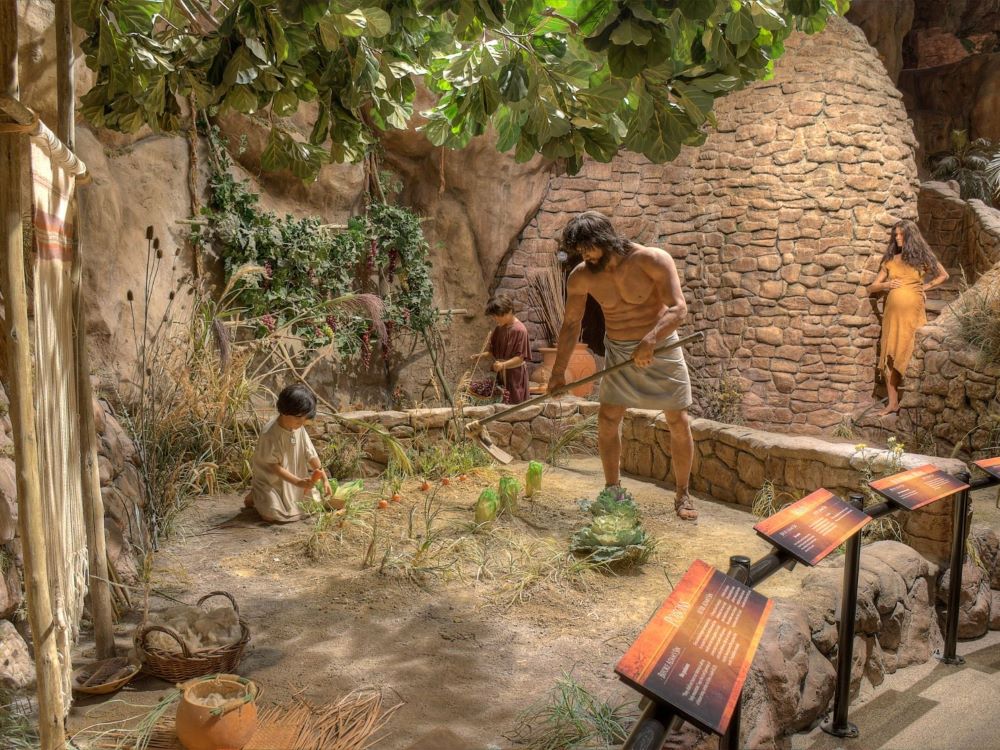State in the Southeastern region of the United States and its two largest cities are Louisville and Lexington and known as the "Bluegrass State", a nickname based on Kentucky bluegrass, a species of grass found in many of its pastures, which has supported the thoroughbred horse industry in the center of the state
Kentucky Map
Places to See in Kentucky
Louisville, KY
Largest city in Kentucky founded in 1778, making it one of the oldest cities west of the Appalachians

Roman Eugeniusz, CC BY-SA 3.0, via Wikimedia Commons; Image Size Adjusted
Lexington, KY
Second-largest city in Kentucky and known as the "Horse Capital of the World", it is the heart of the state's Bluegrass region

Historic Entrance, Mammoth Cave National Park
National Park Service, Public domain, via Wikimedia Commons; Image Size Adjusted
Mammoth Cave National Park
World's longest known cave system with more than 400 miles (640 km) of surveyed passageways

Historic Entrance, Mammoth Cave National Park
National Park Service, Public domain, via Wikimedia Commons; Image Size Adjusted
Kentucky Bourbon Trail
Series of distilleries offering guided tours, tastings, and insights into the craftsmanship and heritage of bourbon production.

Red River Gorge
Jarek Tuszyński / CC-BY-3.0 & GDFL, CC BY 3.0, via Wikimedia Commons; Image Size Adjusted
Cities
Bowling Green · Bardstown · Covington · Frankfort

Red River Gorge
Jarek Tuszyński / CC-BY-3.0 & GDFL, CC BY 3.0, via Wikimedia Commons; Image Size Adjusted
National Protected Areas
- Abraham Lincoln Birthplace National Historical Park
- Abraham Lincoln Birthplace National Historical Park - Kentucky Boyhood Home Unit
- Camp Nelson National Monument
- Cumberland Gap State Historical Park
- Land Between the Lakes National Recreation Area
- Mill Springs Battlefield National Monument
- Red River Gorge Geological Area

Natural Bridge State Park
Jarek Tuszyński / CC-BY-3.0 & GDFL, CC BY 3.0, via Wikimedia Commons; Image Size Adjusted

Smothers Park
Jarek Tuszyński / CC-BY-3.0 & GDFL, CC BY 3.0, via Wikimedia Commons; Image Size Adjusted
Landmarks and Landscapes Eastern Kentucky
Abbey of Gethsemani · Bernheim Forest and Arboretum · Smothers Park

Shaker Village of Pleasant Hill
Jarek Tuszyński / CC-BY-3.0 & GDFL, CC BY 3.0, via Wikimedia Commons; Image Size Adjusted

Creation Museum
Jarek Tuszyński / CC-BY-3.0 & GDFL, CC BY 3.0, via Wikimedia Commons; Image Size Adjusted
Kentucky is a state in the Southeastern region of the United States. Its northern border is defined by the Ohio River. Its capital is Frankfort, and its two largest cities are Louisville and Lexington.
Kentucky was admitted into the Union as the 15th state on June 1, 1792, splitting from Virginia in the process. It is known as the "Bluegrass State", a nickname based on Kentucky bluegrass, a species of grass found in many of its pastures, which has supported the thoroughbred horse industry in the center of the state. Kentucky has also been a long-standing major center of the tobacco industry. Today, Kentucky's economy has expanded to importance in non-agricultural sectors, including auto manufacturing, energy fuel production, and medical facilities.
The state is home to the world's longest cave system in Mammoth Cave National Park, as well as the greatest length of navigable waterways and streams in the contiguous United States and the two largest man-made lakes east of the Mississippi River. Kentucky is also known for its unique blended culture, which includes horse racing, bourbon, moonshine, coal, "My Old Kentucky Home" historic state park, automobile manufacturing, tobacco, bluegrass music, college basketball, Louisville Slugger baseball bats, Kentucky Fried Chicken, and the Kentucky colonel.
In 1776 the counties of Virginia beyond the Appalachian Mountains became known to European Americans as Kentucky County, named for the Kentucky River. The precise etymology of the name is uncertain, but likely based on an Iroquoian name meaning "(on) the meadow" or "(on) the prairie."
Kentucky is situated in the Upland South. A significant portion of eastern Kentucky is part of Appalachia.
Kentucky's northern border is formed by the Ohio River and its western border by the Mississippi River; however, the official border is based on the courses of the rivers as they existed when Kentucky became a state in 1792.
Kentucky can be divided into five primary regions: the Cumberland Plateau in the east, which contains much of the historic coal mines; the north-central Bluegrass region, where the major cities and the capital are located; the south-central and western Pennyroyal Plateau (also known as the Pennyrile or Mississippi Plateau); the Western Coal Fields; and the far-west Jackson Purchase.
The Bluegrass region is commonly divided into two regions, the Inner Bluegrass encircling 90 miles (140 km) around Lexington, and the Outer Bluegrass that contains most of the northern portion of the state, above the Knobs. Much of the outer Bluegrass is in the Eden Shale Hills area, made up of short, steep, and very narrow hills.
Kentucky is the only U.S. state to have a continuous border of rivers running along three of its sides - the Mississippi River to the west, the Ohio River to the north, and the Big Sandy River and Tug Fork to the east. Its major internal rivers include the Kentucky River, Tennessee River, Cumberland River, Green River and Licking River.
Though it has only three major natural lakes, Kentucky is home to many artificial lakes. Kentucky has both the largest artificial lake east of the Mississippi in water volume (Lake Cumberland) and surface area (Kentucky Lake).
Kentucky's 90,000 miles (140,000 km) of streams provides one of the most expansive and complex stream systems in the nation.
Kentucky has an expansive park system, which includes one national park, two National Recreation Areas, two National Historic Parks, two national forests, two National Wildlife Refuges, 45 state parks, 37,896 acres (153 km2) of state forest, and 82 wildlife management areas.
Cumberland Gap, chief passageway through the Appalachian Mountains in early American history.
Cumberland Falls, the only place in the Western Hemisphere where a "moonbow" may be regularly seen, due to the spray of the falls.
Mammoth Cave National Park, featuring the world's longest known cave system.
Red River Gorge Geological Area, part of the Daniel Boone National Forest.
Land Between the Lakes, a National Recreation Area managed by the United States Forest Service.
Big South Fork National River and Recreation Area near Whitley City.
Black Mountain, state's highest point. Runs along the south ridge of Pine Mountain in Letcher County, Kentucky.
Bad Branch Falls State Nature Preserve, 2,639-acre (11 km2) state nature preserve on southern slope of Pine Mountain in Letcher County. Includes one of the largest concentrations of rare and endangered species in the state, as well as a 60-foot (18 m) waterfall.
Jefferson Memorial Forest, located in the southern fringes of Louisville in the Knobs region, the largest municipally run forest in the United States.
Lake Cumberland, 1,255 miles (2,020 km) of shoreline located in South Central Kentucky
Natural Bridge, located in Slade, Kentucky Powell County.
Breaks Interstate Park, located in southeastern Pike County, Kentucky and Southwestern Virginia. The Breaks is commonly known as the "Grand Canyon of the South".
The metropolitan areas of Louisville, Lexington, and Northern Kentucky have a combined population of 2,402,958 as of 2018, which is 54% of the state's total population on only about 19% of the state's land. This area is often referred to as the Golden triangle as it contains a majority of the state's wealth, population, population growth, and economic growth, it is also where most of the state's largest cities by population are located.
Kentucky produces 95% of the world's supply of bourbon whiskey, and the number of barrels of bourbon being aged in Kentucky (more than 5.7 million) exceeds the state's population. In 2019 the state had more than fifty distilleries for bourbon production.
Fort Knox, a United States Army post best known as the site of the United States Bullion Depository, which is used to house a large portion of the United States official gold reserves, is located in Kentucky between Louisville and Elizabethtown.
Horse Racing has long been associated with Kentucky. Churchill Downs, the home of the Derby, is a large venue with a capacity exceeding 165,000. The track hosts multiple events throughout the year and is a significant draw to the city of Louisville. Keeneland Race Course, in Lexington, hosts two major meets, the Spring and Fall running. Beyond hosting races Keeneland also hosts a significant horse auction drawing buyers from around the world. The Kentucky Horse Park in Georgetown hosts multiple events throughout the year, including international equestrian competitions and also offers horseback riding from April to October.
Although Kentucky's culture is generally considered to be Southern, it is unique in that it is also influenced by the Midwest and Southern Appalachia in certain areas of the state. The state is known for bourbon and whiskey distilling, tobacco, horse racing, and college basketball. Kentucky is more similar to the Upland South in terms of ancestry that is predominantly American.
The biggest day in American horse racing, the Kentucky Derby, is preceded by the two-week Derby Festival in Louisville. The Derby Festival features many events, including Thunder Over Louisville, the Pegasus Parade, the Great Steamboat Race, Fest-a-Ville, the Chow Wagon, BalloonFest, BourbonVille, and many others leading up to the big race.
Kentucky's musical depth lies in its signature sound - Bluegrass music. Bill Monroe, "The Father of Bluegrass", was born in the small Ohio County town of Rosine, while Ricky Skaggs, Keith Whitley, David "Stringbean" Akeman, Louis Marshall "Grandpa" Jones, Sonny and Bobby Osborne, and Sam Bush (who has been compared to Monroe) all hail from Kentucky. The Bluegrass Music Hall of Fame & Museum is located in Owensboro, while the annual Festival of the Bluegrass is held in Lexington.
Kentucky has played a major role in Southern and American literature, producing works that often celebrate the working class, rural life, nature, and explore issues of class, extractive economy, and family. Major works from the state include Uncle Tom's Cabin (1852) by Harriet Beecher Stowe, widely seen as one of the impetuses for the American Civil War.
This article uses material from the Wikipedia article "Kentucky" which is released under the Creative Commons Attribution-Share-Alike License 3.0
